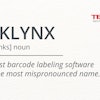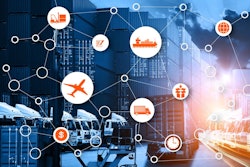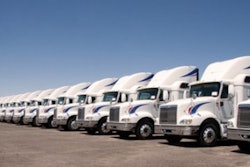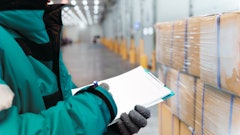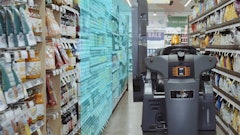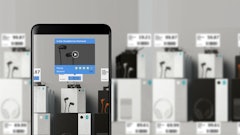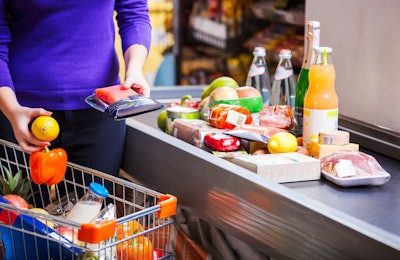
The global retail industry suffers from substantial financial loss every year - $100 billion in shrink resulting from wasted inventory, poor accounting and stolen items. The grocery segment is particularly vulnerable to shrinkage, as inventory problems can emerge all throughout stores. Between the back door and front door, so much can go wrong in the middle, which is why we need better visibility into everyday operations.
One problem retailers struggle with is that real-time visibility across the entire grocery store, including what happens at the back and front doors, is difficult and costly to achieve. History has shown that it’s not realistic for grocers to expect their employees to observe all product movements, while also ensuring 100% scanning accuracy at every checkout. That’s where artificial intelligence (AI) comes in. Using AI at checkouts gives retailers a viable way to prevent loss, augment employee capabilities, while improving the customer experience.
AI is the missing key in inventory management and the answer to optimizing what happens at the back door and front door of grocery stores. Through the technology, retailers can mitigate downstream headaches and deliver better shopping experiences in the middle of the store, where people expect the goods they want to buy to be available.
By investing in the right platform, retailers can address some of their biggest pain points related to product movement, streamline inventory management and boost bottom line profitability. And, they can do so without overwhelming employees or overcomplicating operations.
Back door grocery challenges
When it comes to preventing loss and managing in-store inventory, it is important to focus on the back and front doors just as much as the middle of the store. Customers behave differently depending on where they are located in the store, so retailers must have visibility across the entire store.
Stock issues are typically less about bad forecasting and more about having poor insight into how products move from shelves to cars. In other words, preventing underage and overage frequently requires a different approach than what many store managers take today. Retailers have visibility into forecasting and sales, but they need more information on the inventory side to effectively connect the dots and estimate future revenue against actuals.
At the back door, problems arise when employees don’t have accurate information on what’s coming in from distribution centers. They may get manifests or electronic records of what they are supposed to be receiving, but the reality of what’s actually coming in could be very different. It’s not uncommon for distributors to accidentally drop off too much or too little product.
If auditing processes aren’t thorough, back door workers can miss these mistakes, creating an instant discrepancy between what they believe is on hand and what is actually in the store. If a distributor dropped off too many jars of peanut butter without anyone catching the error, the purchasing team could end up ordering more jars unnecessarily down the road when there is still plenty of stock on shelves.
Another problem at the back door is products coming in that are expired, broken or unsellable in some way. If employees don’t account for this correctly, the store’s inventory system would show more products on hand than what is available, leading to potential out-of-stock scenarios.
Back door problems can also ripple out and affect other stores in the region. For example, should grocery store A accept fewer products than it needs, grocery store B could end up with the extra supply. Consequently, grocery store B’s manager might have to discount the excess product to get it out the door before having to throw it away entirely. Meanwhile, store A could run out of stock prematurely, upsetting customers and missing out on revenue.
Though the solution to these problems seems simple, i.e., pay more attention, it’s hard to execute in practice. People are busy, and audits take time. It makes more sense for employees to trust that manifests are accurate rather than meticulously count all items on every pallet that comes through the door. But to mitigate future issues and avoid backtracking, food retailers need a better solution, especially once you take front door issues into account.
Click here to hear more about AI in the supply chain:
Front door grocery challenges
The front door is where most product losses occur and another way that inventory discrepancies arise. At self-service checkouts, shoppers will often input wrong item counts, select incorrect product types (e.g., organic vs. inorganic) or forget to scan goods altogether. In some cases, people will subtly scan cheaper goods, like a dry gravy packet, in place of a more expensive item, like a ribeye steak, throwing off inventory counts for two products simultaneously. Checkout lane employees also sometimes contribute to retail loss when they purposefully leave items unscanned (aka “sweethearting”) to give people unauthorized discounts.
These actions all contribute to maintaining two realities: one that exists online in inventory management systems and another that represents the real world. The further these realities move apart, the harder it is to reconcile inventory state issues. Problems can persist for so long that employees eventually have to count stock manually, which isn’t a reasonable long-term solution. For these reasons, AI in the form of computer vision is essential - it’s the bridge that merges these two realities.
How AI solves food logistics challenges
AI gives employees at the front door and back door more visibility into and better information about what’s happening all around them. For instance, the technology can count products as they are unpacked from receiving areas and track their movements into the middle of stores. At the front door, AI can also monitor how products get through checkout areas, constantly validating scanners are capturing what the camera is seeing. Should discrepancies arise, the technology can alert nearby staff members to address any issues, thereby mitigating shrink in real time.
Beyond traditional checkout areas, computer vision increases visibility into curbside pickups and buy-online-pickup-in-store (BOPIS) grocery orders, two e-commerce shopping approaches that are growing increasingly popular, especially in the wake of the pandemic. The need to track product movements across these channels will only become more important as time goes on.
Thanks to computer vision technology, grocery stores can keep closer tabs on inventory and empower employees to prevent waste and loss. With better insight into inventory, grocery stores can solve many of their issues in the middle of the store. AI-powered computer vision is the ultimate solution for optimizing critical grocery operations and addressing root cause issues that lead to billions of dollars of retail loss each year.
